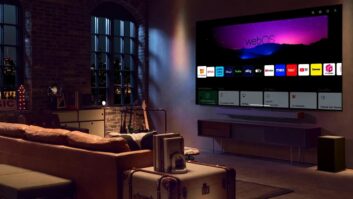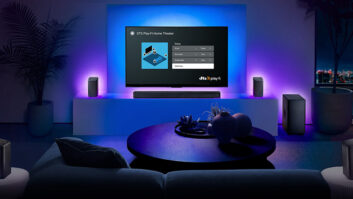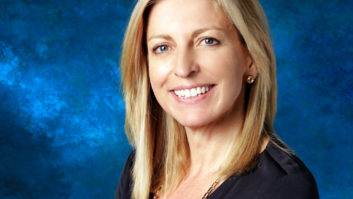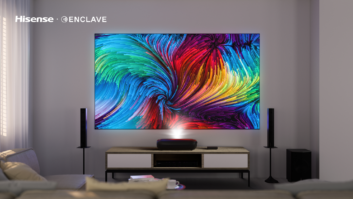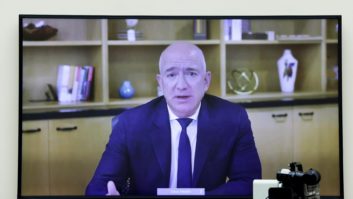Stewart Wolpin is a blogger for DTC
Thanks to a wave of connected TVs, media streamer set-top boxes and the recent introduction of Google TV by both Sony and Logitech, the way consumers buy and watch television is undergoing a radically fundamental change. This change is buoyed by the usual spate of new set-top boxes and services, hampered by the usual spate of consumer confusion, and accompanied by the usual spate of intended and unintended consequences.
According to DTC, 26 percent of all digital TVs estimated to sell this year will be connected, growing to 38 percent next year and more than half in 2013.

Source: DTC
Ironically, the one agent soon to bring the most radically fundamental change to an increasingly educated tube may be sowing the seeds of its own business model destruction.
What’s turning the boob tube into “smart TV” is consumers now can access not only the usual spate of local and cable/DVR TV content, but content from the Web and content from their own PCs.
It’s the GUI, stupid
While initial cable, Web and local content organizing attempts are interesting, they all miss a key TV watching fact: we’re called “couch potatoes” for reason. TV is a lean back and relax environment. TV taters don’t want to figure out behind which icon or menu listing content is buried. They don’t want to worry about “walled gardens,” they’re not fond of more boxes piling up in their living rooms, they don’t want a remote control with a QWERTY keyboard requiring more than one hand to conduct basic controls, they don’t want to surf the net on their big screen TV. They want to watch TV on their TV, and they want finding content no more complicated than perusing the EPG.
Enter TotalGuide from Rovi, formerly known as Macrovision. In early 2008, Rovi bought Gemstar-TV Guide and now supplies the EPGs for 450 cable MSOs in North America. TotalGuide puts all the content available to a consumer – cable, Web-based subscription services (i.e. Netflix, Blockbuster, CinemaNow) and local networked PC-based – into the familiar EPG grid, with all the universal search capabilities of Google TV and without an extra box. A consumer can search for “Casablanca” as they would on any cable EPG, and TotalGuide will bring back all results from all available sources, cable, Web and local. Similarly, clicking any program on the grid results in a list of access choices.
Rovi has signed 35 content partnership deals and is working to sign more. Rovi plans a mid-2011 launch, and says MSOs merely need to push the new TotalGuide out to its subscriber, instantly giving all cable subscribers Google TV-like access.
And there’s the rub.
Cutting the cord
Folks like Yahoo! and Google and the TV makers all are excited about connected TVs under the mistaken belief that consumers are interested in enhancing their current TV watching experience – looking up information on an actor while watching a movie, check stock quotes, news or weather, sports fantasy league stats during a game, etc.
They’re wrong. Consumers can conduct these simultaneous supplementary watching/surfing without any new gear – just a PC or iPad on their lap. Nielsen reported, as of December 2009, nearly 60 percent of TV taters already prop a PC on their lap while watching TV. And anecdotal reports indicate only 20-30 percent of connected TV buyers actually connect their connected TVs to the Internet.
No, some consumers want connected TVs so they can cut the cable cord someday. They’ll still want some of the programming they get on cable and to pick up extra programming that is available on the Internet. They’d also like to cut or lessen their pay TV bills. In a perfect world consumers want to cherry-pick, to pay only for what they want to watch. That’s why consumers want connected TV.
And with TotalGuide, MSOs could be giving their subscribers a reasonto cut back on premium cable subscriptions.
Cable MSOs already are scrambling to herd the cats of their increasingly shifting and diverse revenue streams. The scrum between Cablevision and Fox, which has resulted in the blackout of all Fox stations on Cablevision systems in the New York-Philadelphia area, is just the latest in a series of such broadcaster/carrier disputes. Traditional network broadcasters, faced with dwindling advertising revenue and increased programming costs are attempting to squeeze more cash from their one sure cash cow – mainstream cable subscribers. MSOs, leery of laying off these increased fees on their already angry cable subscribers, are attempting to identify other revenue streams, such as targeted advertising and their own online opportunities.
TotalGuide might help content providers, broadcasters and MSOs solve some of these revenue issues, but may result in the unintended consequences of enabling cable subscribers to go the cherry-picking DYI programming route.
TV taters may like lazily watching a smarter, connected boob tube, but they won’t act like boobs given the chance to tell a hated monopoly what they can do with their wares.




